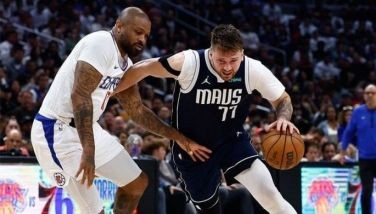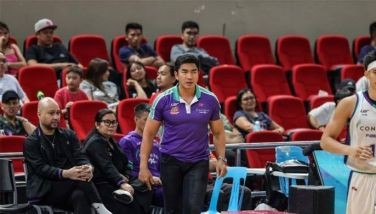The PBA at 39
The Philippine Basketball Association is about to open its 39th season, another celebration of its continuous growth and success. The first professional basketball league in the continent has evolved from an impulsive youngster to an identity-seeking teen to a wise, generous benefactor to national causes. It is first four decades, it has seen many milestones, a few wrong turns and the occasional challenge, but has always come out bigger and stronger.
In 1975, as the country was starting to find its legs again after the disorientating declaration of Martial Law, media (and much of entertainment) was suppressed. Three years earlier, we all woke up to find nothing but white noise on our televisions, and static on our radios. Out of this dark cloud emerged the PBA, bannering the best commercial players in the country, emerging from the shadows of the MICAA as a more formidable alternative. Who knew what the future would bring?
In the long view, basketball then was still a very young enterprise that had grown in fits and starts since the Islanders first departed on a month-long voyage to the Berlin Olympics in 1936. The women’s game, which started first, all but vanished, and the game was predominantly played through the educational system as the Americans had planned. With the rules simultaneously changing over time, players likewise sought to carve out their own identity, often with their elbows and fists.
Left to their own devices in the days before the rookie draft, teams with the most money made out the best in the free-for-all for talent. Collegiate players at the time had the reputation of being mercenaries, taking some schools to championships before flunking out and replicating their success with other schools. Nevertheless, Crispa and Toyota managed to win the lottery again and again, putting together juggernauts that dominated the league in its early days. Who would imagine a local apparel company would win more of its battles against a multinational automotive manufacturer? Their formula was followed by Great Taste entering the league’s second decade, and a draft was put in place. The league’s growth was meteoric, and metaphoric for the Filipino dream.
What was the game like in those nascent years? Like many of our rivers, very fluid and at the same time very rocky. The game at its best was a display of grace and elegance, with innate talent more than technical skills drawing gasps of appreciation. Many players couldn’t even dribble with their left hand, but their “abilidad†and “diskarte†got them through. Games were physical simply because the slower, bigger players were afraid of losing their spots (or worse, their jobs) to younger, quicker players. So a requisite bump here and there resulted in frequent fracases and bench-clearing brawls.
The 1980’s ushered in the first true Fil-Ams both in the league through Pepperdine star Ricardo Brown, and on the Philippine team before and after the headline-grabbing People Power revolution. The Northern Cement experiment introduced us to Dennis Still, Jeff Moore and Chip Engelland, and a rousing victory over the US in the Jones Cup. Purefoods was given the concession of four direct hires from the Philippine team in 1988, and instantly became an All-Filipino Finals mainstay. 1989 was the bumper crop of all rookie drafts, spearheaded by Rookie of the Year-MVP Benjie Paras. All this through numerous coup d’etats against then-President Cory Aquino.
The end of the decade also showed how vulnerable we had become abroad, as the first all-PBA national team received a 64-point drubbing at the hands of China. That third conference also saw how two imports were too much, as our superstars returned to little playing time and few touches.
At the dawn of the 1990’s the PBA’s expansion and scheduling saw a change, and a new generation of fans wanted to be courted. Eventually, the league’s ratings started to slide with new competition from new networks and a media explosion. This culminated with the short-lived emergence of the Metropolitan Basketball Association, which claimed some of the best young talent around the country. Eventually, the league’s strength, stability and resources withstood any advances by the rival league, and the PBA flourished heading into the new millennium.
More on the PBA’s ascent in an upcoming piece.
* * * *
ASEAN Basketball League and F1 patron Tony Fernandes is expanding his support of sports with speed. This week, his Caterham Group has launched its first ever motorcycle division Caterham Bikes at the International Motorcycle Exhibition (EICMA) in Milan.
The two-wheeled sports division joins the Caterham F1 Team, Caterham Racing, Caterham Technology & Innovation, Caterham Composites and the latest arm, Caterham Moto Racing Team. Three prototypes – the Brutus 750 (dubbed the ‘SUV of motorcycles’), the all-electric Classic E-Bike and the premium Carbon E-Bike inspired by F1 technology have been unveiled for launch in 2014 as part of the group’s growth strategy.
Caterham Bikes is deemed a logical extension to the historic British Caterham Group purchased by Fernandes and Dato’ Kamarudin Meranun in April of 2011.
- Latest
- Trending
































